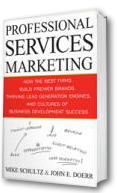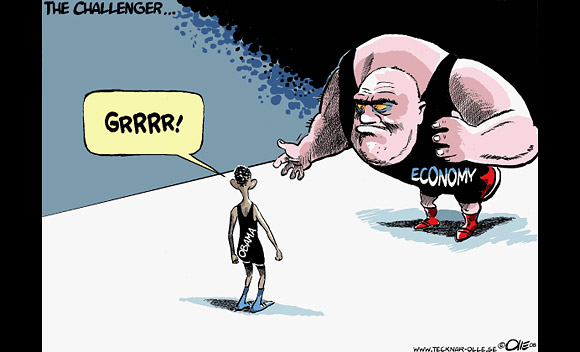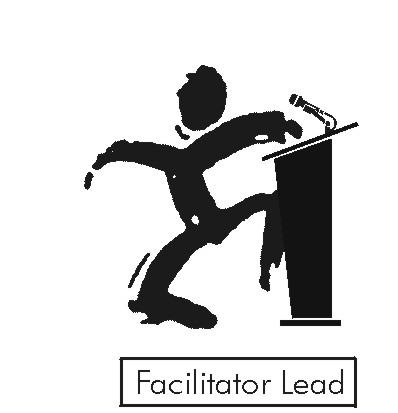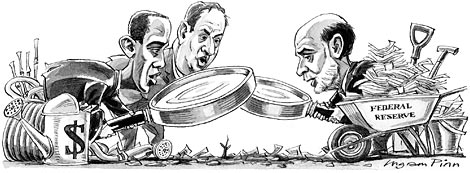
|
http://www.patrickmckenna.com/blog
Page << Prev 50 51 52 53 54 55 56 57 58 59 Next >> of 95
Post #401 – Monday, July 27, 2009
Three New Books That Deserve Your Attention
There has been a flurry of new books released this month, for those of us interested in professional service firms and fortunately, all of them worthy of your attention.
 Suzanne Lowe is one of those few gifted talents that is able to move across professions conducting research and disseminating best practices. I remain a big fan of her work in Marketplace Masters (Praeger Publishing, 2004) which received rave reviews from across the professional services spectrum; and so I was personally delighted to find that she has just released a new book: The Integration Imperative: Erasing Marketing and Business Development Silos – Once and For All – in Professional Service Firms. Suzanne Lowe is one of those few gifted talents that is able to move across professions conducting research and disseminating best practices. I remain a big fan of her work in Marketplace Masters (Praeger Publishing, 2004) which received rave reviews from across the professional services spectrum; and so I was personally delighted to find that she has just released a new book: The Integration Imperative: Erasing Marketing and Business Development Silos – Once and For All – in Professional Service Firms.
According to one of the five-star reviews: The Integration Imperative points out a fundamental problem in professional services firms: their marketing and selling are not connected. When they do learn to connect these functions they not only improve their sales and marketing, but they also improve their value to their clients. Lowe clearly identifies three structural and cultural frameworks that firms can use to overcome their disconnects. The book's case studies help hammer home the concepts and show that real-life firms can truly benefit from her advice. Especially given the economic circumstances firms are in today, this book should be required reading for any professional firm that wants to grow its business and break out of the pack.
You can download the introduction and table of contents - here.
Suzanne Lowe is the president of Expertise Marketing, LLC. She is an analyst, advisor, writer and speaker on the best practices and emerging strategies in professional services marketing. She is a contributor to the second edition of the book Marketing Professional Services, by Kotler, Hayes and Bloom (Prentice Hall Press, 2002), and she was featured as a thought leader in The Expert’s Edge, by Ken Lizotte (McGraw Hill Books, 2008).
From Robert W. Cullen we have The Leading Lawyer: A Guide to Practicing Law and Leadership.
 This book explains the secrets of leadership from leading lawyers who have taken their talent to new heights by combining legal expertise with exceptional leadership skills. It shows how leading lawyers capitalize on their advocacy and analytical skills and combine them with their visionary insights to reach new levels of success. It also demonstrates how to use advocacy and creativity, persuasion and inspiration, and team building to service clients and build successful organizations. This book explains the secrets of leadership from leading lawyers who have taken their talent to new heights by combining legal expertise with exceptional leadership skills. It shows how leading lawyers capitalize on their advocacy and analytical skills and combine them with their visionary insights to reach new levels of success. It also demonstrates how to use advocacy and creativity, persuasion and inspiration, and team building to service clients and build successful organizations.
Bob researches leadership issues within professional service firms and is an Adjunct Law Professor, Mediator and Consultant. He was formally a shareholder and Managing Partner with Hoge, Fenton, Jones & Appel, Inc., one of the largest San Jose based law firms. His specialties include negotiation and mediation strategy as well as leadership for lawyers. The Leadership for Lawyers class that he developed at Santa Clara Law School was one of the first in the nation. You can find out more at www.leadership4lawyers.com
And finally, from Mike Schultz and John Doerr, the Raintoday.com leaders, comes a new book, Professional Services Marketing.
 The promo on the publication claims that the book is perfect for professionals in legal, accounting, architecture, consulting, technology, engineering, marketing, or any other services industry. It covers specific areas that these professionals need to tackle if they want to grow their revenues—creating a marketing and growth strategy; establishing a brand and reputation; implementing a marketing communications program; lead generation strategies; and developing business by winning new clients. The promo on the publication claims that the book is perfect for professionals in legal, accounting, architecture, consulting, technology, engineering, marketing, or any other services industry. It covers specific areas that these professionals need to tackle if they want to grow their revenues—creating a marketing and growth strategy; establishing a brand and reputation; implementing a marketing communications program; lead generation strategies; and developing business by winning new clients.
These guys did a brilliant job of marketing. In the seven page ‘Acknowledgement’ section of their book, they listed over 300 people, many of who had, at one time or another, authored some article in raintoday.com. 300 people who, when they see their name in print, get this warm fuzzy feeling down deep inside and can’t help themselves . . . they just have to do something to help promo the fact that this book has been published.
Yeahhhh, I confess. My name was there amongst those who know how to spell marketing.
Post #400 – Monday, July 20, 2009
Measuring Practice Group Performance
Last March, together with Baker & Daniels Chair Emeritus Brian K. Burke, I co-founded what is now known as The LAB (the Managing Partner Leadership Advisory Board) – a forum designed to provide recently appointed managing partners with a source for obtaining pragmatic advice on their leadership questions and critical burning issues. The formation of this group was the result of suggestions made during our bi-annual First 100 Days master class for new managing partners and has proven to be a valuable resource for new leaders.
 Here is the latest question in a series of different queries that The LAB members have now responded to: Here is the latest question in a series of different queries that The LAB members have now responded to:
As a relatively new managing shareholder I’m attempting to assess the various practice groups we currently have throughout our firm. My question to the group is: What specific metrics do you use and find to be worthwhile in assessing or measuring the performance of your practice groups? And, is there any difference in the metrics that you would use for a practice that is pretty much only in one office versus a more regional or national group?
Read the entire question and response:
Measuring Practice Group Performance 
LAB responses derive from its members' many years' experience as law firm leaders. Along with Brian and I, the LAB is comprised of the following distinguished current and former law firm leaders: Angelo Arcadipane (Dickstein Shapiro LLP); John Bouma (Snell & Wilmer LLP); Ben F. Johnson, III (Alston & Bird LLP); Keith B. Simmons (Bass Berry & Sims PLC); William J. Strickland (McGuire Woods LLP); Harry P. Trueheart, III (Nixon Peabody LLP); R. Thomas Stanton (Squire Sanders); and Robert M. Granatstein (Blake Cassels and Graydon).
Of Related Interest:
> The LAB Questions and Answers On Other Topics
> First Among Equals
Post #399 – Monday, July 20, 2009
Leadership: Hard To Say I’m Sorry
 Even the smartest leaders often find it hard to swallow their pride and say the simple words, “I was wrong” when they have made a mistake. Yet executives who cannot openly assume responsibility for flawed decisions can never correct these mistakes or successfully change direction, writes Harvard Professor Rosabeth Moss Kanter. And the implications of poor judgment get worse the longer denial continues, she warns. Even the smartest leaders often find it hard to swallow their pride and say the simple words, “I was wrong” when they have made a mistake. Yet executives who cannot openly assume responsibility for flawed decisions can never correct these mistakes or successfully change direction, writes Harvard Professor Rosabeth Moss Kanter. And the implications of poor judgment get worse the longer denial continues, she warns.
The simple sentence "I was wrong" is the hardest for leaders to utter and the most necessary for them to learn. If a leader cannot admit being wrong in a timely fashion, he or she can never correct mistakes, change direction, and restore success. The consequences get worse the longer denial prevails.
The arrogance of success is well-known. Powerful people start to believe that they are above the rules, that what applies to ordinary people does not apply to them. That's how officials get into trouble in the first place, using their power to suppress criticism. They never have to say "I was wrong," because everyone conspires to hide mistakes. The best leaders manage the risk that they could be wrong by surrounding themselves with people are smarter than they are, at least in some things. They create conversations, weigh facts, listen to arguments, and then make better-informed and less self-serving decisions.
Perhaps apology training will become a growth business. Actually, I hope not. But I do hope that smart leaders will be more alert to problems, and if mistakes are made, they can utter the three magic words and take corrective action.
Post #398 – Monday, July 20, 2009
Signs That We’re Close To The Bottom
 According to a report in Bloomberg: “The index of U.S. leading indicators rose in June for a third consecutive month, reinforcing signs the economy may be emerging from the worst recession in five decades. According to a report in Bloomberg: “The index of U.S. leading indicators rose in June for a third consecutive month, reinforcing signs the economy may be emerging from the worst recession in five decades.
With every day that passes it seems that journalists and pundits everywhere love to speculate on whether our economy has finally reached the bottom and whether we are close to a turnaround. Here are some tongue-in-cheek signs of what to look for.
We have finally hit the bottom when . . .
• A share of stock in the New York Times costs less than a copy of the New York Times.
• “I work for the government” is finally a good pickup line in a bar.
• The closing bell on Wall Street is melted down to take advantage of scrap metal commodity prices.
• Foreign journalists can only afford to throw flip-flops at visiting world leaders.
• All pink slips must be returned so that they can be reused by the next wave of laid-off employees.
• People in Chinese restaurants are observed to actually be eating the fortune cookies after breaking them open.
Can you think of any you would like to add?
Post #397 - Sunday, July 12, 2009
Retreat Speaker or Facilitator?
 I’ve had a couple of calls this past week inviting me to participate in upcoming partner retreats – although as one of the firms cautioned me, in this economic environment, we don’t call it a retreat, it’s just quietly referred to as a partner’s meeting. In working through the logistics I often get asked what the difference is between retaining a retreat speaker versus a retreat facilitator (both of which I’m comfortable handling). Facilitating a group session and addressing a group as a professional speaker are competencies applied to achieve different ends. In planning your next event, how do you know which skill set to seek out, and when? Here’s how I would normally distinguish those two different roles – I’ve had a couple of calls this past week inviting me to participate in upcoming partner retreats – although as one of the firms cautioned me, in this economic environment, we don’t call it a retreat, it’s just quietly referred to as a partner’s meeting. In working through the logistics I often get asked what the difference is between retaining a retreat speaker versus a retreat facilitator (both of which I’m comfortable handling). Facilitating a group session and addressing a group as a professional speaker are competencies applied to achieve different ends. In planning your next event, how do you know which skill set to seek out, and when? Here’s how I would normally distinguish those two different roles –
A facilitator serves the role of:
• Bringing a group of people together interactively to achieve specific objectives – team building; strategic planning; conflict resolution; problem-solving.
• Contributing the structure and process to enable the group to function effectively and make high-quality decisions.
• Creating and maintaining an environment of inclusion, energy, and commitment from all partners.
While a Speaker is:
• Informing – as a subject matter expert, sharing practical knowledge and valuable perspectives relevant to your partners.
• Motivating and inspiring– providing the right stimulus to set or enrich the tone of the retreat.
• Entertaining – lightening the mood, relaxing the partners; adding a positive and upbeat element to a gathering.
A good facilitator should have a skill-set which includes:
• Professional education, training, and / or experience in organization development or organization effectiveness
• Knowledge of group dynamics – ability to maintain interest, focus and energy level of a group of partners to achieve maximum participation and productivity.
• Effective use of facilitation techniques, such as open-ended questions; active listening, conflict resolution; brainstorming; decision-making; and action planning.
While a good speaker needs:
• Content knowledge – relevance of topics to achieve session objectives; knowledge of latest trends and best practices in their chosen area of expertise.
• Platform skills – dynamic presentation style that engages the audience.
• Adaptability – ability to relate the topic and presentation to the special needs and profile of the audience.
To help you match the right resources for the results you’re seeking, you need to know which role (and sometimes it’s both) you would prefer to have at your next partner’s retreat.
Post #396 - Tuesday, June 30, 2009
CLO’s Are Not Serious About Change.
 I was intrigued today to read the news release entitled CLO’s don’t think law firms are serious about change. With all due respect to friends at Altman, they can only report the answers that CLO’s believe they should provide to questions in surveys like this. And in this specific survey, what is being reported with respect to how serious CLO’s themselves are, about change, I believe to be absolute nonsense! I was intrigued today to read the news release entitled CLO’s don’t think law firms are serious about change. With all due respect to friends at Altman, they can only report the answers that CLO’s believe they should provide to questions in surveys like this. And in this specific survey, what is being reported with respect to how serious CLO’s themselves are, about change, I believe to be absolute nonsense!
Fred Bartlit, founder of Bartlit Beck (American Lawyer Litigation Boutique of the Year), made a provocative statement on Legal OnRamp a few months back. He claimed: “I do not think most corporate law departments are serious about reducing costs.” Fred went on to cite a few examples where he had offered to help a client save money and found the client uninterested.
I was a little taken back by Fred’s assertion. From my past corporate experience I could not imagine how any company could not be genuinely interested in reducing costs, especially at a time of such economic despair.
Then I had an interesting experience in May. On behalf of an AmLaw listed, “Go-To” regional firm of over 500 attorneys, I spent two weeks initiating contact with the General Counsel of over thirty-five Fortune 500 Companies to explore their interest in investing one-hour to meet with 3 partners. The invitation was to discuss how this law firm could provide exceptional client service and deliver a potential savings of between 25 to 40 percent, or more. And that proposed savings was accompanied by specific details of guaranteed responsiveness, assured predictability, enhanced added-value and references from some top New York based Fortune 50 existing clients.
But . . . here’s the kicker.
To make my offer an absolute win-win proposition I offered each of the GC’s a personal guarantee. I personally guaranteed that if they agreed to meet with these partners and did not feel that they received value from that meeting in and of itself, then they were welcome to send me an invoice for one hour of their time and the name of the Charity that they would like me to send the check to, on their behalf. Dead serious!
So while I’m sitting at my desk reading the commentary of one Fortune 500 CEO talking to the financial press on May 23rd about how he was cutting 10% of the workforce, putting a freeze on merit bonuses, shrank his capital spending outlay, is renegotiating contracts on property leases and claims that his executives are “leaving no stone unturned in their search for savings as sales sputter,” I’m talking to the Company’s General Counsel asking for a meeting and being told that “he’s not interested.”
While Fred Bartlit may have been speculating about how serious most law departments are about reducing costs, I now have the proof, and can name names. So my respectful suggestion to these CLO’s is: quit suggesting that law firms aren’t serious about change and get your own house in order.
And if you are a General Counsel reading this and truly do want to save money, want to hear about a firm that can help you do that, and want to take me to task on what I’m claiming, please give me a call – I DARE you!
* * * * * *
June 30th at 4:15 p.m.
I just received this, by e-mail, from a former General Counsel and now a member of the management team at an AmLaw 200 firm:
Bring it on . . . great post Patrick. I am sick of hearing how we are not working to change. I spend a large part of my time, and even more of my energy on changing the habits of traditional lawyers. Don't tell me it can't be done. The question is, are those same traditionalist now just working in-house?

Post #395 – Wednesday, June 24, 2009
Handling The Trauma of Layoffs
According to a survey of 2100 employers, world-wide, 58 percent report that they are still planning layoffs and will be cutting even more jobs in the last half of 2009. During the past few months I’ve been counseling a number of firms faced with having to make drastic cuts and concerned with how to execute any layoffs with dignity. That may seem like it should be the natural way to approach such a critical decision, but as these cuts have been made over the past eight months, there is ample evidence that many premiere firms did not handle their economic retrenchment with much finesse.
Read my entire article: Handling The Trauma of Layoffs 
In this article I outline six of the more common mistakes that I call “Layoff Malpractice,” five things to think through before initiating a layoff, and a dozen ways to show compassion for the emotional turmoil that layoffs cause.
Post #394 – Wednesday, June 24, 2009
Green Shoots And Other Such Nonsense
I usually wear an adult-sized diaper when reading economics news, a habit I recently acquired and might suggest that you adopt, too, if you are going to keep up with this economics stuff, as I think we are still in for some nasty shocks.
An e-mail from my good friend and favorite economist arrived earlier this week to tell me that he has identified the next bubble . . . it has already begun . . . and it is in full swing.
Some may well remember that Alan Greenspan denied that it is possible for anyone to identify a bubble. He was willfully blind to what the FED's policies had done in the second half of the 1990's to create the dot-com bubble. Then he was equally blind to what those same expansionist policies were doing to the housing market. So as you might imagine, I was intrigued to learn what my friend thinks he has discovered.
 Today’s bubble . . . two words: consumer confidence! Today’s bubble . . . two words: consumer confidence!
We are told that consumer confidence has bounced back from its February 2009 low. Consumers listen to news reports. News reports speak of green shoots, parroting Ben Bernanke's pet phrase. That phrase has been picked up by the media, the same way that Greenspan's "irrational exuberance" was picked up when Greenspan used it in late 1996.
Now - California's unemployment rate in May hit 11.5%. The state will go technically bankrupt on July 1. It is about to have its bonds downgraded to junk status. There are no green shoots in California. There is the equivalent of dead brush in forest fire season.
Yet the consumer says he is confident. "No problem."
And - The World Bank estimates that the world economy will sink by 2.9% in 2009. How scientific. Not 3% -- but precisely 2.9%. This, from the same outfit that predicted with equal rigor, in March, that the world economy would fall by 1.7%.
Yet the consumer says he is confident. "No problem."
Then - the summer will bring more news about rising unemployment. There will be more foreclosures. The real estate market will continue to decline. By how much? No
one knows. But aren't there statistics on foreclosures? Yes, but nobody knows if they are accurate. The U.S. government relies on a private firm, RealtyTrac, for its information. States use different ways to assess foreclosures. In April, the number of foreclosures reported for Atlanta by the national press was half of what the published local legal notices said.
Yet the consumer says he is confident. "No problem."
All of this is obvious. The public ignores it. This is why consumer confidence is a bubble. It keeps rising, yet it is not supported by the facts that count:
• You personally are on the hook for $36,658 and climbing — your share of the now $11.2 trillion national debt;
• Washington says we'll need an "extra" $1.8 trillion to cover the 2009 deficit — the amount spent, over the amount we'll take in. That's a new record;
• You know there's no free lunch — we will either have to borrow that money from the Chinese, steal it from our retirees and the unborn, or print it;
• Today, nearly half of all the money we borrow comes from countries you'd never have expected to trust with your future — China, Japan, Saudi Arabia, Venezuela, Russia, even Iran and Iraq;
• Meanwhile, more Americans owe more credit card debt than anytime in history . . . nearly $1 trillion overall;
• Never mind the 2 million more homes headed for foreclosure this year, with offices and strip malls closing and warehouses emptying out, commercial property is headed for real trouble;
• And finally, under current rules, the Social Security trust alone will run out of money in less than 10 years from right now. And Medicare and Medicaid? Don't even think about it.
There is no economic recovery yet. There is only a reduction in the decline of the economy.
So, consumer confidence is the new bubble market. It pains me to sound so pessimistic, but the smart money is not buying into this bubble! And you should not be making your firm's strategic plans based on any quick economic recovery.
Have a look at some of my earliest postings covering this downturn:
#150 – September 2006 Living Beyond Our Means
Guess who has the worst current account deficits in the entire world? Guess which countries spend more than they earn - regularly and spectacularly? Last in line are the nations of the Anglo-Saxon, English-speaking debt-based empire! . . . the United States, with a current account balance of minus $829 billion. Add up all the deficits of the entire world and you get a figure barely half of the U.S. total. Nothing fails like success.
#181 – March 29, 2007 The Intractability of The Situation
As we approach the beginning of the second quarter, anyone paying even a little attention can’t help but notice the stunning array of problems that are menacing the global economy.
#254 – November 18, 2007 Is the Financial; Day of Reckoning Close At Hand?
In just the past few months, Wall Street's big banks and brokers went from dismissing the subprime credit crunch as "no big deal" to dropping billions in subprime related losses . . . It looks to me as if there has been a big sea change in the world’s markets.
#276 – January 10, 2008 Downsizing Is Here
The future in a single word: downsizing. Downsizing is going to be popular, hip, cool, fashionable and maybe even, sensible.
#279 – January 25, 2008 Whispering The R Word
Financials . . . builders . . . shippers and retailers . . . one by one, the sectors are getting hit. And the news is almost all bad: foreclosures, house sales, unemployment, consumer confidence, inflation . . . losses . . . declines. One problem after another . . . one loss after another. I would say that we’re already in a recession
#285 – March 14, 2008 This Will Get Much Worse
I think that these stories will get much worse as time goes on. Because the financial industry is at the center of this recession, the economy is at great risk. We are now seeing huge banks in trouble and enormous efforts to cover it up and contain the collateral damage.
Post #393 – Tuesday, June 23, 2009
Leadership in Tough Times - Revisited
Further to my Post #390 of a few weeks back, I obtained a copy of the Jim Kouzes (co-author of The Leadership Challenge) presentation (53 slides) on the topic of “Leading in Turbulent Times.” Jim opens with a provocative cartoon showing someone at their bedside answering the telephone and the message says: “This is your wake-up call – change or die.”
Jim’s presentation reviews the actions that leaders must take in challenging times to strengthen their own and others’ resilience:
#1 – Challenge is the context for leadership
#2 – Define reality
#3 – Fully commit to what’s important
#4 – Create meaning
#5 – Embrace the challenge and take charge
#6 – Engage with others
#7 – Control what you can
#8 – Tell positive stories
I hope you find this material useful. 
Post #392 – Thursday, June 11, 2009
Being A Leader In Freaked Out Times
 Leadership is an improvisational art. The game — hey, the basic rule book — keeps changing. Competition keeps changing. So leaders need to change, to keep reinventing themselves. Leaders have to be ready to adapt, to move, to forget yesterday, to forgive, and to structure new roles and new relationships for themselves, their teams, and their ever-shifting portfolio of partners. Leadership is an improvisational art. The game — hey, the basic rule book — keeps changing. Competition keeps changing. So leaders need to change, to keep reinventing themselves. Leaders have to be ready to adapt, to move, to forget yesterday, to forgive, and to structure new roles and new relationships for themselves, their teams, and their ever-shifting portfolio of partners.
The leader is rarely — possibly never? — the best performer. Leaders get their kicks from orchestrating the work of others — not from doing it themselves.
Leaders deliver. If you’re aiming to be a real leader during the next five years, then you need to mimic the pizza man: You’d better deliver! For the past five years, ideas and cool have counted (which was important). What counts now? Performance. Results.
Leaders groove on ambiguity. The next five years are going to be an economic roller-coaster ride. That means that firm leaders are going to be challenged repeatedly not just to make fact-based decisions, but also to make some sense out of all of the conflicting and hard-to-detect signals that come through the fog and the noise. Leaders are the ones who can handle gobs and gobs of ambiguity.
Leaders trust their guts. Intuition" is one of those good words that has gotten a bad rap. For some reason, intuition has become a "soft" notion. Garbage! Intuition is the new physics. It’s an Einsteinian, seventh-sense, practical way to make tough decisions. Bottom line, circa 2001 to 2010: The crazier the times are, the more important it is for leaders to develop and to trust their intuition.
Leaders trust trust. In a world gone nuts, we cry out for something or someone to rely on. To trust. The fearless leader may (make that, had better) change his or her mind with the times. But as a subordinate, I trust a leader who shows up, makes the tough calls, takes the heat, sleeps well amidst the furor, and then aggressively chomps into the next task in the morning with visible vitality.
Leaders bring in different dudes. Winning leaders know that their organizations need to refresh the gene pool. That happens when leaders forget old practices and open up their minds to new ones. That also happens — and more effectively — when leaders bring in new people and new partners with new ideas. As a leader, do with your people what Cisco has done so effectively with technology: Acquire a new line of thinking by acquiring a new group of thinkers.
Leaders make mistakes — and make no bones about it. Nobody — repeat, nobody — gets it right the first time. Most of us don’t get it right the second, third, or fourth time either. Winston Churchill said it best: "Success is the ability to go from failure to failure without losing your enthusiasm." As times get crazier, you’re going to see more — and dumber — mistakes. When you make mistakes, you need to recognize them quickly, deal with them quickly, move on quickly — and make cooler mistakes tomorrow.
Leaders don’t create followers, they create more leaders. Too many old-fashioned leaders measure their influence by the number of followers that they can claim. But the greatest leaders are those who don’t look for followers. Think of Martin Luther King Jr., Mohandas Gandhi, or Nelson Mandela. They were looking for more leaders in order to empower others to find and create their own destinies.
Leaders honor the assassins in their own organizations. There’s only one reason why any human being ever makes it into the history books: because he or she remorselessly overthrew the conventional wisdom. Those are leaders. But truly great leaders, the ones who aim to leave a legacy, go to the next level. They consistently seek out and honor the people in their own organizations who want to overthrow their conventional wisdom. Great leaders honor the people who want to depose them, the assassins in their midst. (Greg Jordan at Reed Smith evidenced this principle earlier this week as he defeated a leadership challenge that threatened to end his nine-year run at the helm of the top 25 US law firm).
Leaders wear their passion on their sleeve. There’s absolutely no question in my mind: Leaders dream in Technicolor. They see the world in brighter colors, sharper images, and higher resolution. Leadership, in the end, is all about having energy, creating energy, showing energy, and spreading energy. Leaders emote, they erupt, they flame, and they have boundless (nutty) enthusiasm. And why shouldn’t they? The cold logic of it is unassailable: If you do not love what you’re doing, if you do not go totally bonkers for your work, your team, your clients, and your firm, then why in the world are you doing what you’re doing? And why in the world would you expect anybody to follow you?
Leaders know: Energy begets energy. Every successful firm, every successful team, and every successful project runs on one thing: energy. It’s the leader’s job to be the energy source that others feed from. The job of the leader is to be a ‘dispenser of enthusiasm.’ successful project runs on one thing: energy. It’s the leader’s job to be the energy source that others feed from. The job of the leader is to be a ‘dispenser of enthusiasm.’
Kudos to Tom Peters who provided a cool list of leadership tips. These were just some of the tips that caught my eye.
Page << Prev 50 51 52 53 54 55 56 57 58 59 Next >> of 95
|
|


 Ashridge House
Ashridge House  11226 - 60 Street
11226 - 60 Street  Edmonton, Canada
Edmonton, Canada  T5W 3Y8
T5W 3Y8